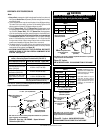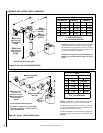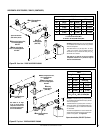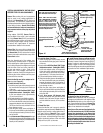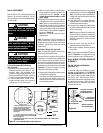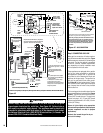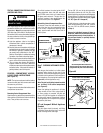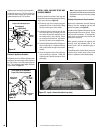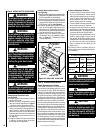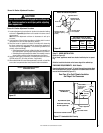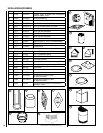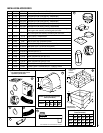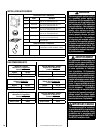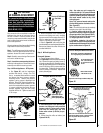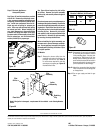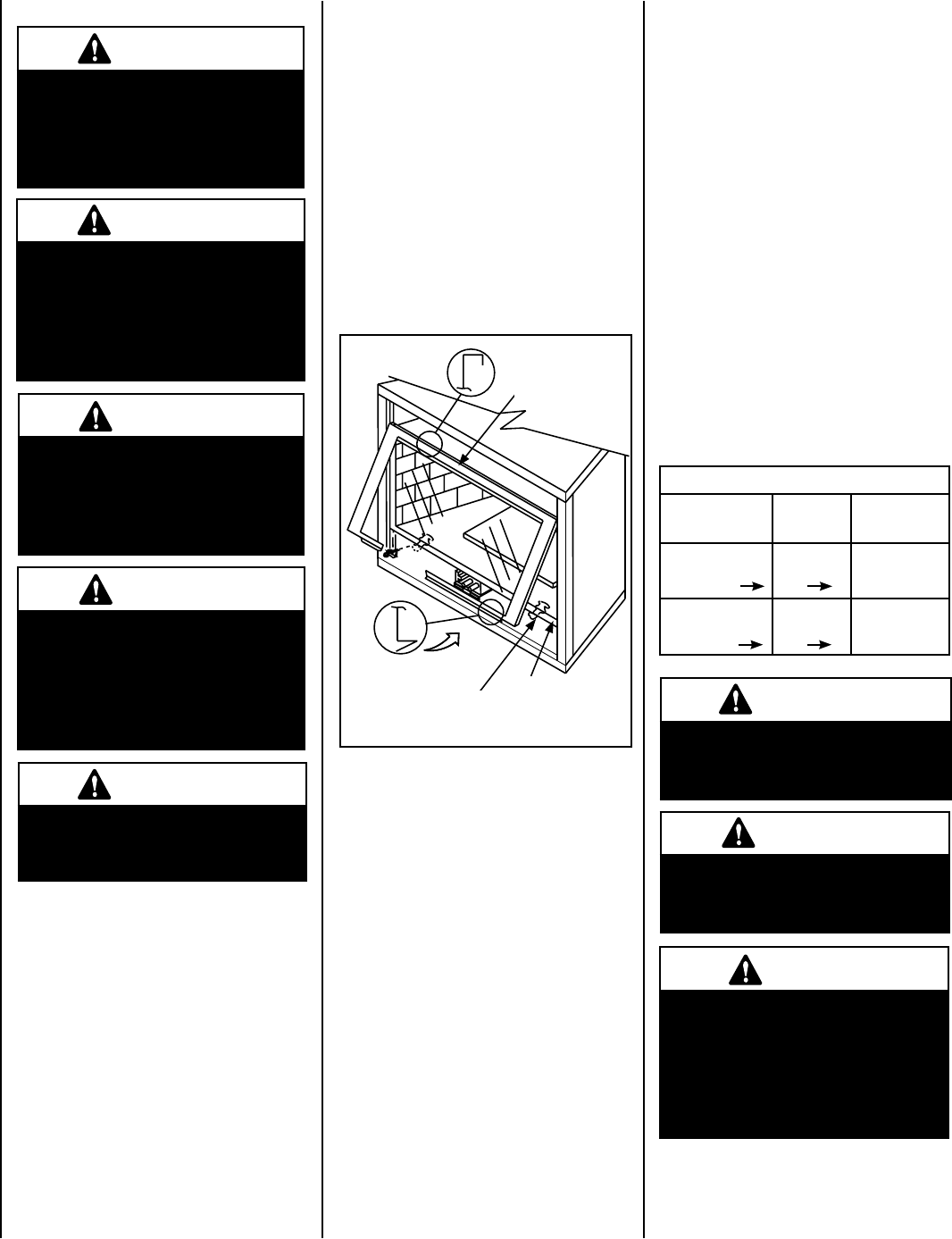
30
NOTE: DIAGRAMS & ILLUSTRATIONS NOT TO SCALE.
Step 9. INSTALLING THE GLASS DOOR
WARNING
Air shutter adjustment should only
be performed by a qualified profes-
sional service technician.
WARNING
Ensure front glass panels are in
place and sealed during adjust-
ment.
Air Shutter Adjustment Guidelines:
Amount of
Primary Air
Flame
Color
Air Shutter
Adjustment
If air shutter is
closed too far
Flame will
be orange
Air shutter
gap should be
increased
If air shutter is
open too far
Flame will
be blue
Air shutter
gap should be
decreased
CAUTION
Carbon will be produced if the air
shutter is closed too much. Any
damage due to carboning result-
ing from improperly setting the
air shutter is not covered under
the warranty.
Figure 54 - INSTALLING GLASS DOOR
Top Flange on
Glass Door
Bottom Vee-flange
Glass Door
Glass Door Latch
Glass Door
Firebox Floor
Step 10. BURNER ADJUSTMENTS
Flame Appearance and sooting
Proper flame appearance is a flame which is
blue at the base and becomes yellowish-orange
in the body of the flame. When the appliance
is first lit, the entire flame may be blue and will
gradually turn yellowish-orange during the first
15 minutes of operation. If after a short period
the flame stays lowered blue, or if the flame is
orange with evidence of sooting (black tip), the
air shutter opening may need to be adjusted.
If the air shutter openings closed too far, sooting
may develop. Sooting is indicated by black puffs
developing at the tips of very long orange flames.
Sooting results in black deposits forming on the
logs, appliance inside surfaces and on exterior
surfaces adjacent to the vent termination. Soot-
ing is caused by incomplete combustion in the
flames and lack of combustion air entering the
air shutter opening. To achieve a warm yellow-
ish-orange flame with an orange body that does
not soot, the shutter opening must be adjusted
between these two extremes.
WARNING
Handle this glass with extreme
care! Tempered glass is suscep-
tible to damage – do not scratch
or handle roughly while rein-
stalling the glass door frame.
WARNING
Do not operate appliance with the
glass front removed, cracked or
broken. Replacement of the glass
should be done by a licensed or
qualified service technician.
WARNING
Do not attempt to substitute the
materials used on this door, or
replace cracked or broken glass
with any materials other than
those provided by the appliance
manufacturer.
WARNING
The glass door of this appli-
ance must only be replaced as
a complete unit as provided by
the manufacturer. Do not attempt
to replace broken, cracked or
chipped glass separately.
WARNING
Do not attempt to touch the front
enclosure glass with your hands
while the fireplace is in use.
Air Shutter Adjustment Guidelines
• If there is smoke or soot present, first check
the log set positioning to ensure that the
flames are not impinging on any of the logs.
If the log set is properly positioned and a
sooting condition still exists, then the air
shutter opening should be increased.
• The more offsets in the vent system, the larger
the air shutter opening will need to be.
• An appliance operated with the air shutter
opened too far, may have flames that appear
blue and transparent. These weak, blue and
transparent flames are termed anemic.
• Propane models may exhibit flames which
candle or appear stringy. If this is present
and persists, adjust the air shutter to a more
closed position, then operate the appliance
for a few more minutes to ensure that the
flame normalizes and the flames do not
appear sooty.
The following chart is provided to aid you in
achieving the correct air shutter adjustment for
your installation.
Installing Glass Enclosure Panels
(see Figure 54)
1. Visually inspect the gasket on the backside of the
glass panel. The gasket surface must be clean,
free of irregularities and seated firmly.
2. Position the glass enclosure panel in front of
the firebox opening at a 45 degree angle and
engage the top flange over the lip at the top
of the firebox opening. See Figure 54.
3. Swing the glass enclosure panel down and
back. Ensure the gasket seats evenly as the
panel draws shut. Engage the Vee-flange at
the bottom of the panel with the latches and
close the latches to secure the panel.
4. Reinstall top louver assembly and control
compartment door see installation instruc-
tions on Page 27 , Reinstalling Control
Compartment Door).
Removing Glass Enclosure Panels
(see Figure 54)
1. Remove the top louver assembly by lifting it
up and pulling it out.
2. Remove the control compartment access
door (see removal instructions on Page 27
- Removing Control Compartment Door).
3. Locate the two (2) latches at the top of the
control compartment. To disengage the two
latches from the bottom vee-flange of the
glass enclosure panel, reach for the handles
located towards the back of the latches and
pull the handles down toward the front of
the appliance.
4.
Swing the bottom of the door out and raise
it slightly to lift the top flange of the door
frame away from the appliance.



